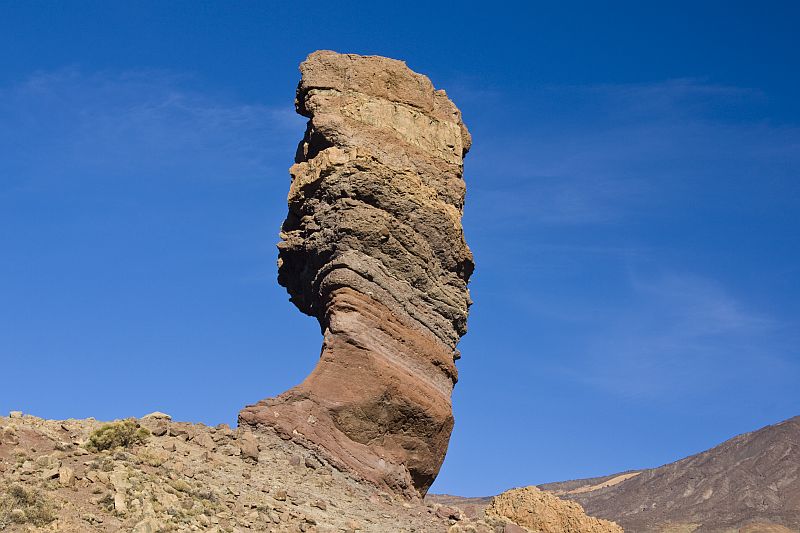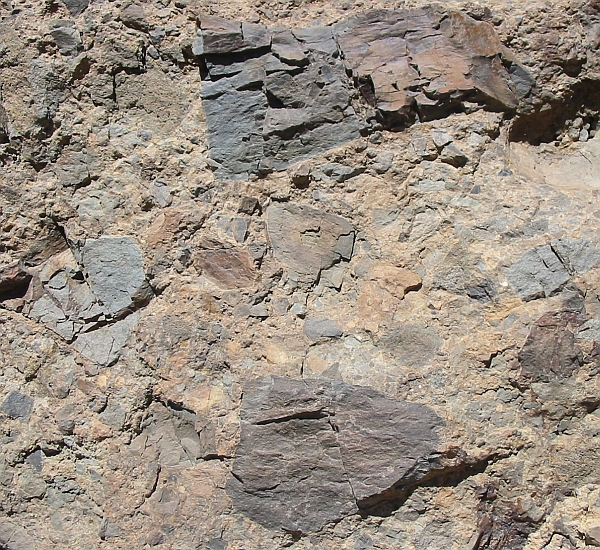The Roque Cinchado is a rock formation in the Island of Tenerife (Canary Islands). It is one of a group (Roque del García) of erosional remnants in the vicinity of Pico del Teide volcano. It is worth to take a look and in this particular case I am definitely not the only one who thinks that way. I have heard that the Roque Cinchado is the most photographed rock in the whole world. This may be true but I am still sceptical. After all, aren’t several beaches claiming to have the whitest sand in the world and several manmade structures claim to be the most photographed buildings (Eiffel Tower, Taj Mahal).

What about Uluru in Australia or the Delicate Arch (Utah, USA) or the Devils Tower (Wyoming, USA)? I am not even talking about the Grand Canyon in Arizona but maybe it isn’t a rock and doesn’t qualify? Yes, reasonable people will positively confirm that the Grand Canyon is not A rock. It is a deep canyon with walls composed of different rock types. But can we say that the Cinchado is a rock? I’d rather say its more like an erosional remnant of a volcano-sedimentary sequence although it is probably overkill for most people. I really don’t know the answer to that intriguing question of most photographed rock but it is not that important for me anyway.
Important, somewhat puzzling and actually saddening is the fact that even as famous as the Cinchado is, there is very little geological information available in the web. How did it form? What are the layers made of? Almost nothing. You have to dig into research papers but most of them are not publicly available. Only thousands of different and equally useless photos of the Cinchado are available and now I am adding yet one more.
However, I try to excuse myself by adding few words about the geology as well. The Island of Tenerife is one huge volcanic edifice that is actually second in size after only the Island of Hawaii (Big Island). Current peak of the island is called the Pico del Teide (3718 meters above the sea level). It is situated in the Las Cañadas caldera which means that the volcano have somehow destroyed its former and probably even much higher peak and later built a new one. There have been much controversy and scientific dispute about the origin of the caldera. We know how calderas form in the majority of cases. Volcanic edifice collapses after enormous eruption which partially emptied the magma chamber beneath the volcano. But the Las Cañadas caldera seems to be different. We know now that there is a sedimentary sequence on the sea floor right next to the island reaching 50 km in length. The volcano, therefore, did not collapse vertically, it was an enormous landslide. Such landslides seem to be pretty common in this region. There are three major debris avalance deposits right next to Tenerife and many bordering other islands in the archipelago as well. By the way, one seems to wait its time in the island of La Palma nearby. Let’s hope it won’t happen anytime soon.
But what has it to do with the Roque del García? Well, this rock formation is simply all that somehow escaped the landslide. There were probably even two landslides at different times, one on both sides of the rocks. Common erosional agents like rain and windblown sand grains took over after the slump and gradually shaped the rocks the way we know them now. Eventually the Cinchado will be destroyed by the erosional forces that helped to create it but revolution always eats its children. Doesn’t it?
What about the composition of the Cinchado? It is composed mainly of pyroclastics, alluvial fan breccias, and conglomerates of volcanic material. The clasts are mostly phonolitic as are most of the lava flows there. There are also several phonolitic dikes crosscutting the sedimentary layers.

I visited the same place again several years later. Here is an overview with many pictures: Roques de Garcia.

I wish somebody, somewhere, in one of the websites would report how tall this rock is from base to top. No one seems to mention this statistic, and I have never seen a picture with somebody standing beside it to judge. I assume from the pics that it is somewhere between 5 feet and 500 feet tall.
It seems to me that it is about 30 meters tall (about 100 feet). It is difficult to judge even if you have seen it but it definitely is more than 5 and less than 500 feet tall. So your guess was absolutely correct 🙂